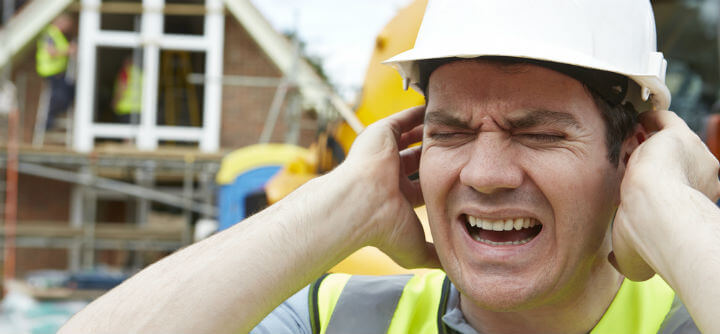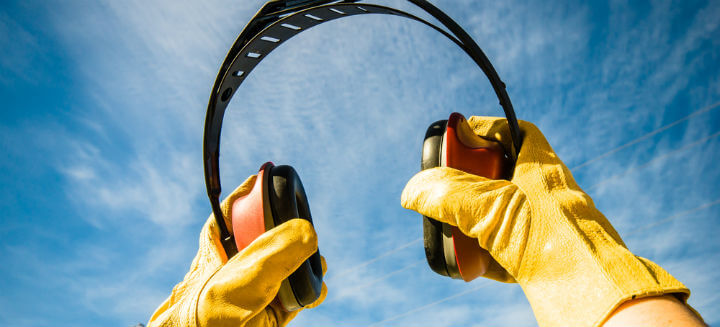Hearing protection is now a global practice in which employers must provide a safe working environment for their employees. It is also your responsibility as an employer to educate your employees and emphasize the significance of hearing protection in your workplace.
Why Is Hearing Protection Important?
Did you know hearing issues are one of the most common physical side effects among factory workers? An estimated 22 million workers per year experience hazardous noise in the workplace.
Hearing loss does not pertain to optimal performance and efficient communication. The ailment worsens the working capacity of the employees and affects the well-being of your workers. Moreover, hearing issues take a profound toll on your employees’ home and social lives.

Thus, as an employer, you must follow OSHA’s hearing protection guidelines. Persistent loud noise at work, day in and day out, can cause permanent physical and psychological damage to your employees. These include:
- Complete hearing loss
- Short term or long-term tinnitus
- Physical stress
- Psychological stress
- Muffled hearing
- Limited productivity
- Inability to hear warning sirens or announcements
- Impeded concentration
- Irritability
- Fatigue
- High blood pressure (temporarily)
- Cardiovascular conditions
OSHA Noise Standard
OSHA’s noise standard compels employers to set limits on noise exposure. In a working day with 8 hours on average – 90 dB is OSHA’s legally recommended Permissible Exposure Limit (PEL). Similarly, for a silent study room, it is 20 dB, and 140 dB defines the pain threshold.
However, The National Institute of Occupational Safety and Health takes a more careful approach and recommends 85 dB as the optimal noise standard. The goal is to minimize permanent damage to worker’s hearing and prevent noise-induced physical and psychological issues.
When Is Hearing Protection Required per OSHA?
When should one wear hearing protection? The OSHA noise exposure limits above clearly outline when hearing protection is required, but not all employers are aware of or implement protection measures.
Well, here are three warning signs that noise levels at work are too high and need to be examined.
- Humming or ringing in the ears
- Substantial or momentary hearing loss
- Having to shout at a co-worker at arm’s length so they can hear you
So, if you or one of your employees or teammates experience any of the signs mentioned above during the job or when you exit the building or construction site, it means there is a problem.
What Is a Hearing Conservation Program per OSHA?
According to OSHA’s Noise Standard, employers must take measures to reduce noise exposure in their facilities and floors via administrative controls, engineering controls, and Hearing Protection Devices (HDPs).
All these measures will help attenuate the operational noise your employees experience to acceptable levels.

How to Practice Hearing Protection Safety in the Workplace
Here are three methods you can use to establish hearing protection safety on your floors.
1. Start with the Hierarchy of Hazard Control
Hierarchy of Hazard Control is an upside-down pyramid where “Elimination” sits at the top, and PPE is the least effective measure.
Here is a chronological order of the hierarchy of hazard control.
- Elimination
- Substitution
- Engineering Controls
- Administrative Controls
- PPE
Move up in the list to enhance your controls and vice versa. However, the implementation is not always as simple but certainly worth your time and energy.
2. Limit Workers’ Exposure
You can take certain measures to avoid loud environments and limit workers’ exposure to excessive noises.
Construction zones and concerts are two major settings associated with damage to hearing. However, it can occur in any place with loud noises such as large vehicle movements, machinery, etc. Many labor unions require their construction workers to get their hearing tested at regular intervals.
Limit exposure by implementing minimum distances from noise sources, or sound dampening equipment.
3. PPE for Noise Protection
Some working environments require employees to wear “Personal Protective Equipment” (PPE). Employees wear respirators, safety glasses, and gloves, etc.
Help your workers by providing them with noise-cancellation equipment such as noise-canceling headphones. Some workers put on their mp3 players and iPods to listen to music. This helps them dim the background noise; however, blasting away their favorite tunes can still damage their hearing.
Hence, they may be better off wearing noise-cancellation headphones as it will reduce exposure to ears from any strain.
However, PPE is the least effective means to help the cause as you do not rectify the root cause.
What Is NRR?
NRR is an acronym for Noise Reduction Rating. It is a gauging unit developed by the EPA to determine the usefulness of your hearing protection devices to reduce sound exposure within your working environment.
NRR must be shown on PPE packaging. The higher the NRR number for your hearing protection gear, the better capabilities for noise reduction.
Contact Safety by Design for Hearing Conservation Training
If you are a facility manager or employer concerned about the safety and well-being of your employees’ hearing, you can always seek professional assistance to establish safe practices.
Contact Safety by Design today to help you with your workplace hearing protection safety. Not only will our team help you establish safe practices, but we offer ongoing OSHA-aligned training in Houston. If you’d rather take a more hands-off approach, our safety management services company has experience in most industrial settings, and can help your team today.



